
Thriving on food, wine, and spending time with friends -- nobody knows how to live like the Spanish. Even if the daily schedule (especially siesta) takes a little getting accustomed to, the quality of life Spain offers makes it thoroughly worth working around some occasional odd shop hours.
Beautiful Barcelona is a dreamy mix (though not a blend) of gothic and modern, Spanish and Catalan, from the bustling La Rambla rife with locals and tourists, to the wine country nearby. It's a marvel on the Mediterranean.
It's been years since neighboring Sitges has been a sleepy fishing village -- LGBT visitors are unlikely to get much rest, unless it's a nap on a sunny beach.
The old and the new contrast in chic chiaroscuro in Madrid's high rises and centuries-old plazas, palaces, and pop-up shopping. Cosmopolitan yet relaxed, Madrid is unlike any other city of its size. Here's a sampler platter to get you started.
Photo: Puerta del Sol in the center of Madrid (By Santiago Diaz)
Barcelona
Gaixample
Gaixample is the nickname of the gay neighborhood in the Eixample district. (Meaning "the extension," Eixample was the part of Barcelona that filled in between Barcelona's old city and the towns of Sants, Gracia, and Sant Andreu in the 19th and early 20th centuries.) Gaixample has the district's grid pattern of streets with distinctive chamfered corners -- where the buildings' corners are cut off at the end, making the intersections open, sunlit octagons. Gaixample is bordered by Carrer Balmes, Gran Via de les Corts Catalanes, Carrer del Compte d'Urgell, and Carrer d'Arago, and because of the high concentration of queer establishments and residents, it is a prime area for nightlife and entertainment
 1. Axel Hotel
1. Axel HotelThe Axel Hotel Barcelona, voted the Best Gay Hotel in the World by
Out Traveler readers, is a fixture of the Gaixample. The cosmopolitan Axel chain, with additional hotels in Berlin and Gran Canaria, is a pioneer in queer accommodations. The 105 rooms are soundproofed (vital because the hotel is often a gathering point in the neighborhood). Inside the beautiful facade are a ground-level bar, gym, and a spa, Wellness Club 33. The hotel is topped by a pool and the Sky Bar, which serves cocktails and gorgeous Eixample views. Guests who register through the hotel's Website are given access to a guests-only social network called AxelPeople, which describes hotel events and promotions and, more importantly, lets you know who is rooming next door -- and lets your neighbors know who you are, if you choose. The gay bars are right at your proverbial doorstep, and the city center is a 10-minute walk away.
AxelHotels.com 2. El Penedes
2. El PenedesEl Penedes, one of the oldest winemaking regions in Europe, is a very short trip from Barcelona. The region's thousands of hectares of vineyards produce the most delicious wines, but its stars are the stellar cavas. Tours offer the chance to taste the wines, or you can explore on your own with a bicycle. At the center of many wineries is a traditional Catalan farmhouse, a masia. Some provide excellent accommodation and are fuel for travelers' ditch-the-rat-race-and-become-a-vintner fantasies.
 3. Casa Batllo
3. Casa BatlloAntoni Gaudi (1852-1926) is the designer of Barcelona's textures. His buildings are dripping sandcastles, honeycombs, turtle shells, and all manner of organic forms. Most prominent of his creations is the Sagrada Familia basilica which, upon completion (it was begun in 1882 and is still under construction), will be the tallest church building in the world. More accessible is the Casa Batllo, a home Gaudi remodeled from 1904 to 1906 with an animal, skeletal aspect, including balconies of bone, iron reeds of sea grass, and nary a straight line. The building is crowned by a dragon.
CasaBatllo.es/en 4. Espai Boisa
4. Espai Boisa Catalan cuisine reaches its apex in Barcelona, where traditional recipes are made with premium vegetables, seafood, and cured meats. While it may look complex, the focus is on high-quality ingredients, often simply prepared. Espai Boisa cooking school in the Eixample neighborhood, under the direction of its chef, teaches guests to prepare seasonal and traditional recipes using organic, locally procured ingredients. Students prepare the meals, including paella and a wine or sangria pairing, then dine on the fruits of their labors.
EspaiBoisa.comChurros con Chocolate
The monthly Sunday tea dance at Sala Apolo might disappoint those expecting to see a sea of shirtless gym bunnies. This place is seriously bonkers, a festival of outlandishness -- and everyone is welcome, not just the terminally pretty. Like all things Spanish, this tea dance starts late. Aim to arrive around 7 p.m.
Sala-Apolo.com 5. Jean Leon Winery
5. Jean Leon WineryThe award-winning wines are as good as the story of the Spanish immigrant who stowed away on a ship to the United States in 1951, joined the army, opened the Los Angeles celebrity hotspot La Scala (a joint venture with James Dean), rubbed elbows with every famous person of the time, and later bought a Spanish winery just outside Barcelona in 1962. There he there made his own label of cabernet sauvignon and pinot chardonnay, now sold internationally, and which, fittingly, bears labels and names in homage to Hollywood.
JeanLeon.com 6. La Boqueria
6. La Boqueria Foodies could get lost for days in La Boqueria, the largest outdoor food market in Europe, and one that has been in operation since 1217. The fish market offers a daily catch of fresh fish, octopus, wriggling shellfish, and some massive monsters from the deep. Also on offer are mounds of bright produce, endless varieties of olives, Iberian ham, fresh meat, artisanal chocolates -- really, all kinds of products, from high end to low cost. When the variety overwhelms, stop at the Bar Pinotxo for an espresso, or El Quim for a bite and a beer, and resume shopping. It's easy to find as the entrance on La Rambla, the old city's wide pedestrian boulevard.
Boqueria.info 7. Homage to Barcelona, by Colm Toibin
7. Homage to Barcelona, by Colm ToibinAcclaimed gay author Colm Toibin has made Barcelona his home on and off since the 1970s. His historical account traces the city from its founding in the third century B.C. to its growth in the 1970s, and from dictatorship to democracy. The book includes much about native Catalonian sons Joan Miro, Pablo Picasso, Salvador Dali, and Antoni Gaudi.
La Terrrazza
Each summer La Terrrazza brings a Mallorcan atmosphere -- and thumping electronic dance music -- to the mainland in an open-air club in a manor building with spectacular city views from its perch on Montjuic, a hill overlooking the city. World-renowned disc jockeys perform for a mixed crowd, including lots of gay men, until sunrise.
LaTerrrazza.comThe Schedule
Spain's long siesta lunch, two hours starting around 2 p.m. daily, pushes the whole day's schedule back several hours. Workers often stop for a beer and a small bite around 6 p.m. or 7 p.m. before heading home. Dinner is late -- never before 8 p.m., but 10 p.m. or 11 p.m. isn't unusual -- and going out is later. In the evening, aim for a happy hour beer or lounge experience, but if you're planning on a night at a bar or club, don't think of arriving before 1 a.m.
Photos: Courtesy of Axel Hotel; Courtesy of Vallformosa; Natursports / Shutterstock.com (Sagrada Familia); Casa Batllo; Courtesy of Espai Boisa; Courtesy of Jean Leon Winery; Tupungato / Shutterstock.com (La Boqueria)
Sitges
 8. Sitges
8. SitgesJust 40 years ago, this town was still a somnolent fishing village. Now, it's an internationally known gay travel destination. The area's microclimate keeps it jut a bit warmer than nearby Barcelona (40 minutes away by train), ideal for making use of the beautiful beaches. The sheer concentration of gay bars, tapas restaurants, and shopping -- plus a friendly, slightly hedonistic vibe -- make for a virtual blinking welcome sign for LGBT travelers from the U.S., U.K., Germany, Sweden, and France, to name a few. But it's the weekenders and day-trippers from Barcelona who keep this place grounded and friendly.
9. Corpus Christi Flower Festival
For one day each year, all the major streets of Sitges are decorated with colorful, intricate designs of flower petals. The celebration is for the Catholic holiday Corpus Christi, and on June 6 residents will start harvesting carnation petals and creating their designs in the evening. All the next day, their creations will be on view.
SitgesEvents.comFragata
The chicest restaurant in town, on the beach at the edge of Plaza del Baluarte, is a draw year round. The interiors are impeccably sophisticated in glass, taupe, and brown, and sitting in the center of the restaurant is a futuristic glass cube of a wine cellar. There's not a bad option on the menu of Catalan dishes, but get the seafood. This is a fishing village, and everything is off-the-boat fresh. And get reservations.
RestauranteFragata.comMalvasia de Sitges
This grape, harvested late in the season by just a handful of producers, is known for making unusual dessert and sweet wines. The production is small, so you're unlikely to find the award-wining wines here anywhere else.
 10. Sitges Gay Carnival
10. Sitges Gay CarnivalThe town's wildest party is undoubtedly Gay Carnival, (held four days before Carnival -- a week of parties throughout the city). Gay Carnival's events include Pink Night and Noche de las Mantillas, a party where people wear funeral attire. Both Carnival and Gay Carnival are jam-packed with visitors. As many as 250,000 queer people are expected to visit during the week.
GaysSitgesGuide.comIberia's Business Class
In addition to the airport lounge, white-linen dinner service, and lay-flat beds available to Iberia's business class travelers, one of the more distinctive elements of service is the airline's impressive wine list. The selection on a recent 2014 flight included Condado de Haza Reserva 2010, a garnet-hued tempranillo; Baron de Ley Finca Monasterio 2010, a deep cherry tempranillo blend; Carabal 2007, an earthy blend of cabernet sauvignon, syrah, graciano, and tempranillo; Abadia de San Campio, a honeyed albarino; and Protos Verdejo 2013, a fruit-and-cut-grass verdejo.
Iberia.comPhotos: Shutterstock (church); Visit Sitges (Corpus Christi); Peter Scholz / Shutterstock.com
Madrid
Chueca
Madrid's gay nexus is the Chueca neighborhood. Packed with coffee houses, restaurants, design shops, lounges, nightclubs, and LGBT-friendly hotels, this barrio is lively, young, and very gay -- and unlike some men-only meccas, this corner of the city has lesbian entertainment options, too. The liveliest time of the year is summer, when the hundreds of outdoor bars allow al fresco revelry for the hundreds of thousands of visitors. The Fuencarral pedestrian boulevard is a hub of Spanish, independent, and avant-garde fashion -- not an haute couturier in sight. This street is cosmopolitan, lively, and an ideal place for people-watching and unique shopping.
 11. Temple of Debod
11. Temple of DebodRight in the middle of Madrid's beautiful Parque del Oeste (Western Park) is a cultural oddity: a bona fide Egyptian temple. The Temple of Debod, given to Spain by Egypt in the late 1960s, dates back 2,000 years and was built in dedication to the gods Amun and Isis. There's no fee to visit.
MuniMadrid.es/TemploDebodMADO
Summer begins with Madrid Pride, or MADO, one of the largest pride events in the world. It's a series of street celebrations that will take place July 1-5 in 2015. Centered in Chueca, and with the support of some 500 LGBT community businesses in Madrid (bars, restaurants, hotels, book stores, gyms, boutiques, etc.), the series of celebrations and protests includes all of Spain's LGBT groups, as well as locals and visitors of all ages. In addition to musical performances and Flamenco, there is a foot race in Calle Pelayo in which men try best each other wearing a pair of elegant high heels.
MadridOrgullo.com/en 12. The Prado
12. The PradoThe unassailable big dog when it comes to collections of Spanish art also has one of the world's finest collections of European art. While it began as a royal collection, administered by court painters Francisco Goya and Diego Velazquez, it languished for many years but was renovated and expanded into a world-class museum in the early 2000s. The exhibit of Goya's Black Paintings is a grim, thrilling stunner.
 13. ME Madrid Reina Victoria
13. ME Madrid Reina VictoriaMuch like the city itself, the Melia hotel ME Madrid Reina Victoria is chic yet laid back, with a restrained sexual thrum. Near the Puerta del Sol, the hotel's stark white facade is the most prominent on the Plaza de Santa Ana bustling with restaurants and lots of activity. The 192 bright rooms feature large windows and lots of natural light, good sound systems, light panels beside the beds (a "hey you sexy thing" setting for intimate moments), and sleek bathrooms. The real gem is the rooftop bar, which offers sweeping views, weekend parties, and a quick escape from street level. It's a perfect spot for a cocktail and some music under the stars after a day of exploring.
Melia.comMercado de Fuencarral
Named for the shopping boulevard on which it sits, this market of small independent fashion shops is the epicenter of anti-label clothiers. Shops include Fuck, G.I. Jane, Ugly, and Slam. This place is unlike any mall you've been to before.
MDF.esPuerta del Sol
This half-circle-shaped plaza is the literal and figurative center of the city. It is the site of Kilometro Cero, the starting point of the Spanish road network, and has the city's symbol, a bear and madrono tree, in statue form.
 14. Mercado San Miguel
14. Mercado San MiguelGlass walls, a wood-and-iron roof, granite floors, and artistically lit food stands make this easily one of the more beautiful food markets in Europe, and it is just steps from the spectacular, enclosed Plaza Mayor. In the morning grocers, fishmongers, and fresh pasta-makers sell their goods from picture-perfect stalls to locals and visitors. In the afternoon Mercado San Miguel fills with hungry and thirsty customers ordering beer and tapas to be eaten on-site at restaurant counters or wine bars. This one is open late, until 10 p.m. Monday and Wednesday, and 2 a.m. Thursday through Saturday.
MercadoDeSanMiguel.es 15. Tartan Roof at Azotea del Circulo
15. Tartan Roof at Azotea del CirculoThe Tartan Roof, at the Circulo de Bellas Artes building, has the most spectacular views of Madrid -- nearly 360 degrees. (There's a small fee, 3 euros, to take the elevator to the roof.) The restaurant and bar, serving cocktails and dishes inspired by global street food, is a hidden gem and an unusual mixed-use space. There are restaurant tables, cabana-style lounge beds, mounds of artificial grass areas built for couples to drink and survey the city, and long communal tables for groups of all sizes -- and all have the superb, must-see city backdrop.
AzoteaDelCirculo.com  16. The Sofia
16. The SofiaHeavy representation by Spanish artists, notably Salvador Dali and Pablo Picasso, dominate the Spanish national 20th-century art museum. The Sofia is worth a visit if for no other reason than to see Picasso's heartrending masterwork Guernica, created as an answer to the bombing of
Guernica, a Basque village, during the Spanish Civil War. Rarely has a work of art ever brought international attention to such a conflict.
MuseoReinaSofia.es/enAlcala de Henares
 17. Museo Casa Natal de Cervantes
17. Museo Casa Natal de Cervantes Don Quixote author Miguel de Cervantes is the giant of Spain's literary tradition; that novel was truly the first work of world literature. His characters Don Quixote and Sancho Panza sit on opposite sides of the modern-medieval divide. The house where Cervantes was born in 1547 is in the sleepy town of Alcala de Henares (a UNESCO World Heritage site and the home of one of the oldest universities, dating to 1293). The house, just 40 minutes by train from Madrid, is now a museum that recreates life in the 16th and 17th centuries.
Museo-Casa-Natal-Cervantes.org La Terraza Del Mercado Restaurant
The views of Alcala de Henares's medieval city center from the restaurant's terrace are a contrast to La Terraza's sleek minimalism. The interior design palette puts the food at center stage. The menu items -- including Iberian ham, Cantabrian anchovies, and venison -- add a touch of ingenuity to classic Mediterranean flavors.
LaTerrazaDelMercado.comPhotos: Shutterstock (Temple of Debod, Prado, view); Tupungato / Shutterstock.com (Mercado San Miguel); Astudio / Shutterstock.com (The Sofia); Courtesy of Comunidad de Madrid (Cervantes); Marta Munoz-Calero (Tartan Roof)
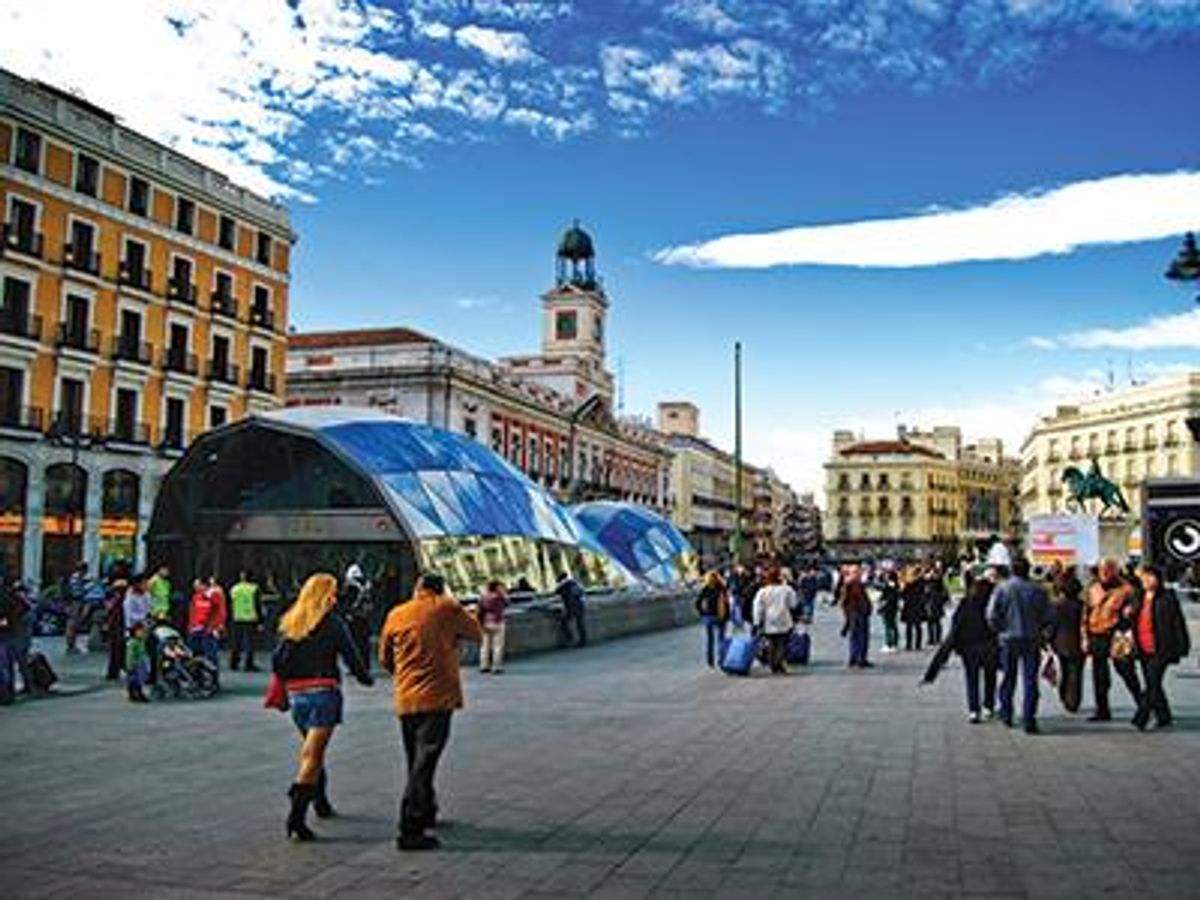

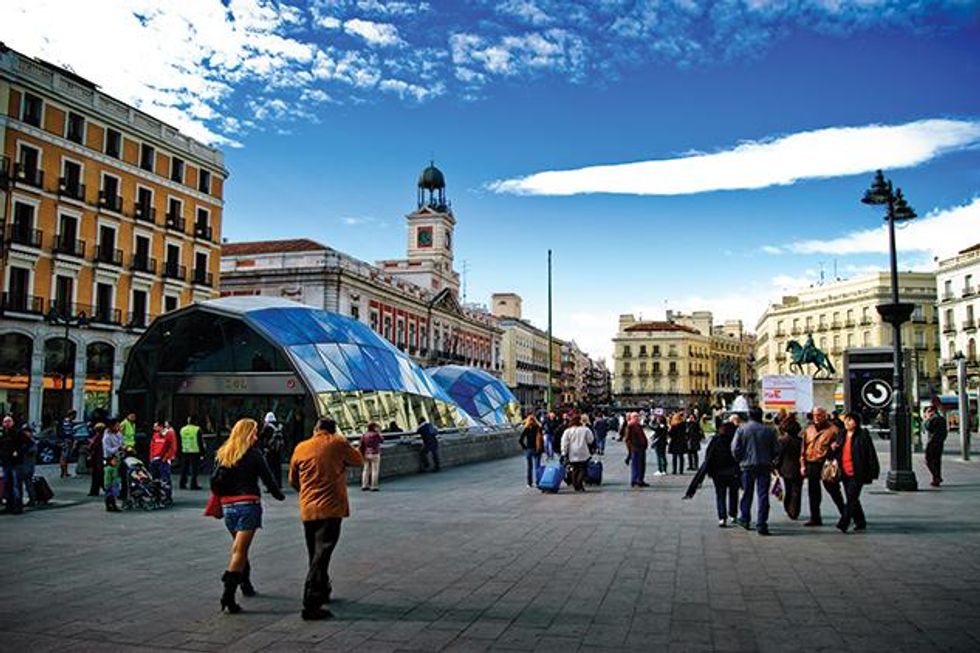 Thriving on food, wine, and spending time with friends -- nobody knows how to live like the Spanish. Even if the daily schedule (especially siesta) takes a little getting accustomed to, the quality of life Spain offers makes it thoroughly worth working around some occasional odd shop hours.
Thriving on food, wine, and spending time with friends -- nobody knows how to live like the Spanish. Even if the daily schedule (especially siesta) takes a little getting accustomed to, the quality of life Spain offers makes it thoroughly worth working around some occasional odd shop hours.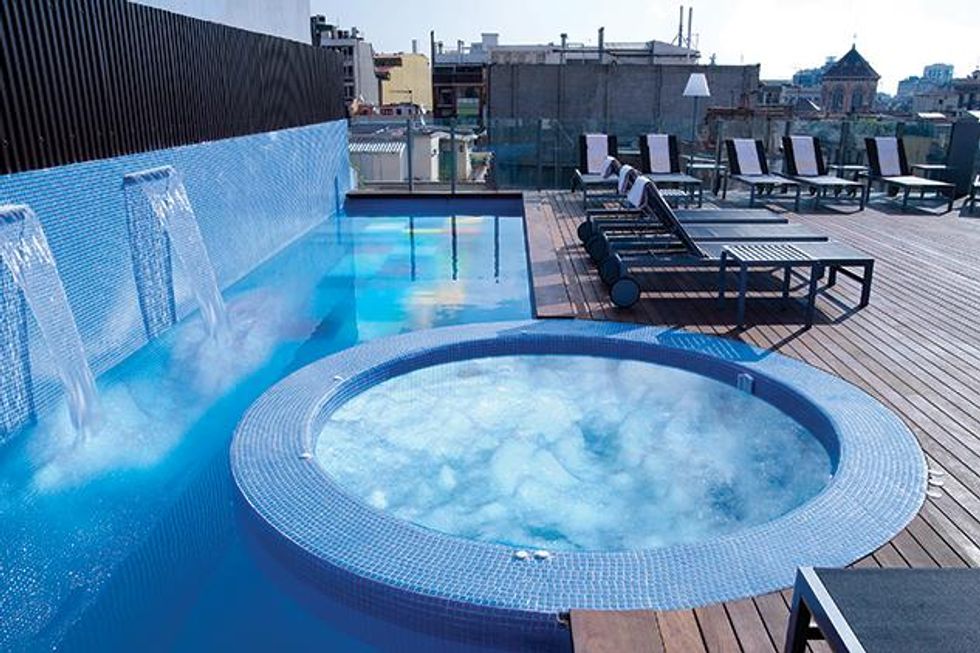 1. Axel Hotel
1. Axel Hotel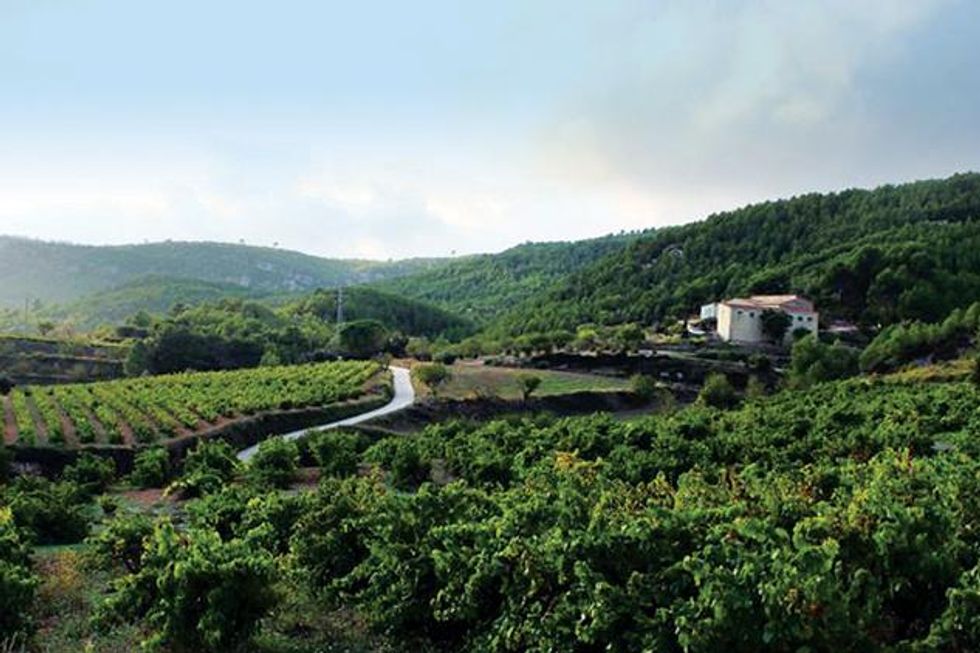 2. El Penedes
2. El Penedes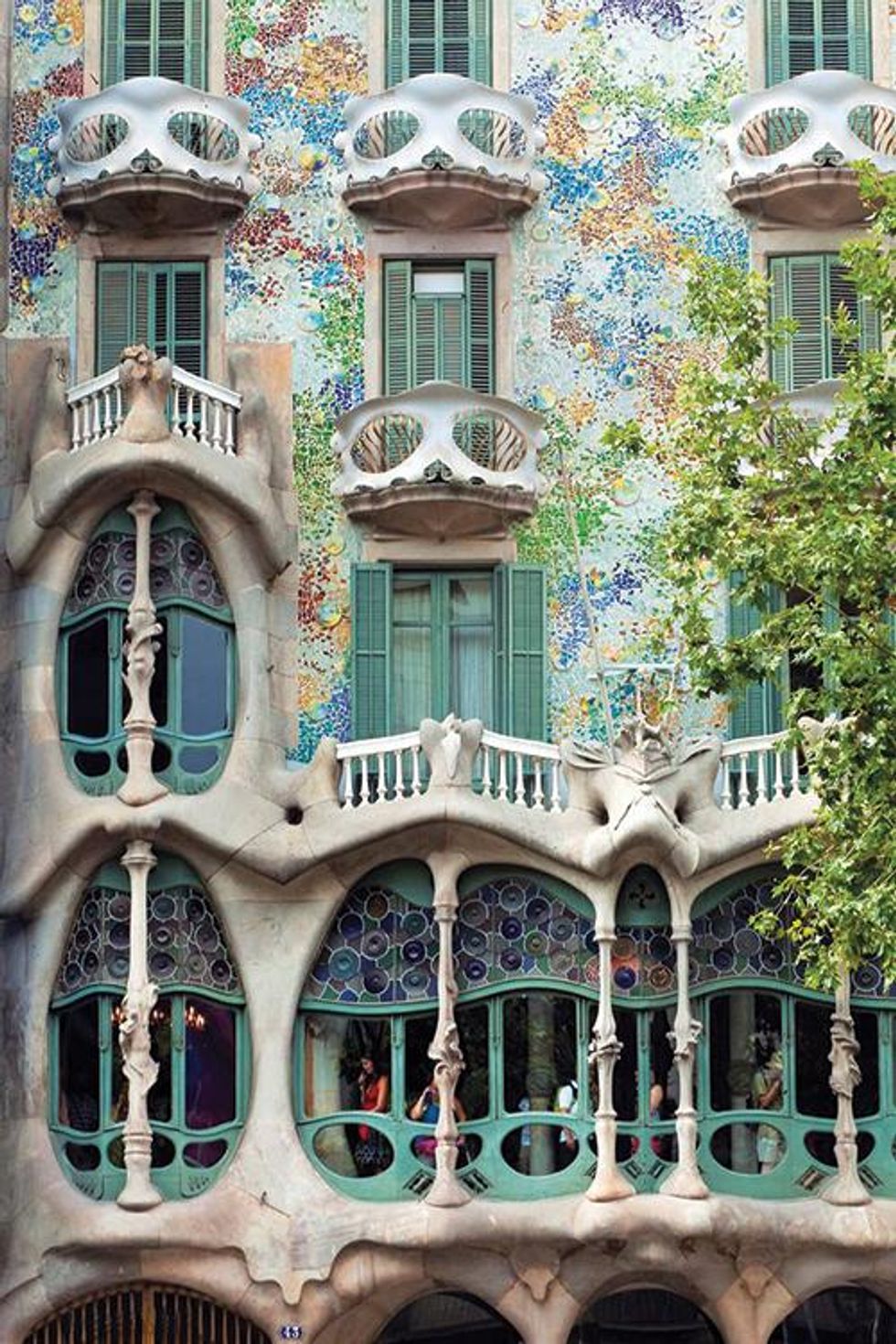 3. Casa Batllo
3. Casa Batllo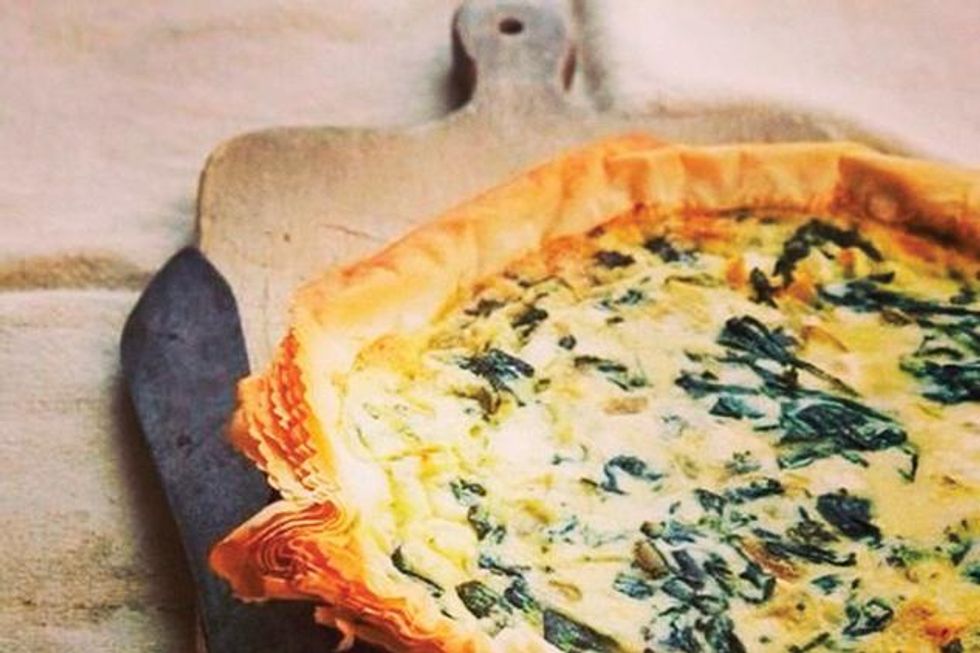 4. Espai Boisa
4. Espai Boisa 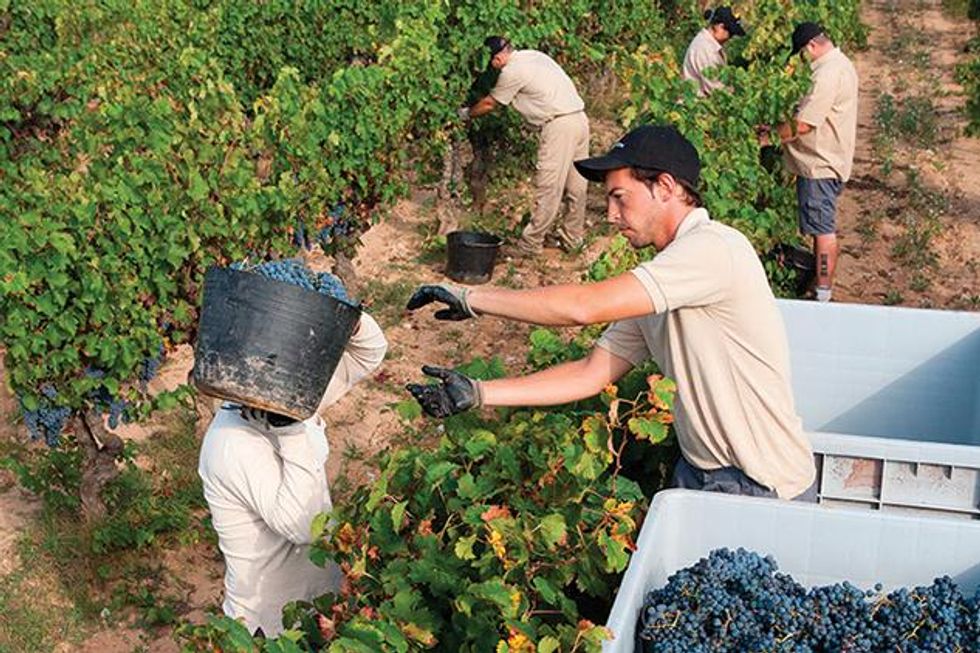 5. Jean Leon Winery
5. Jean Leon Winery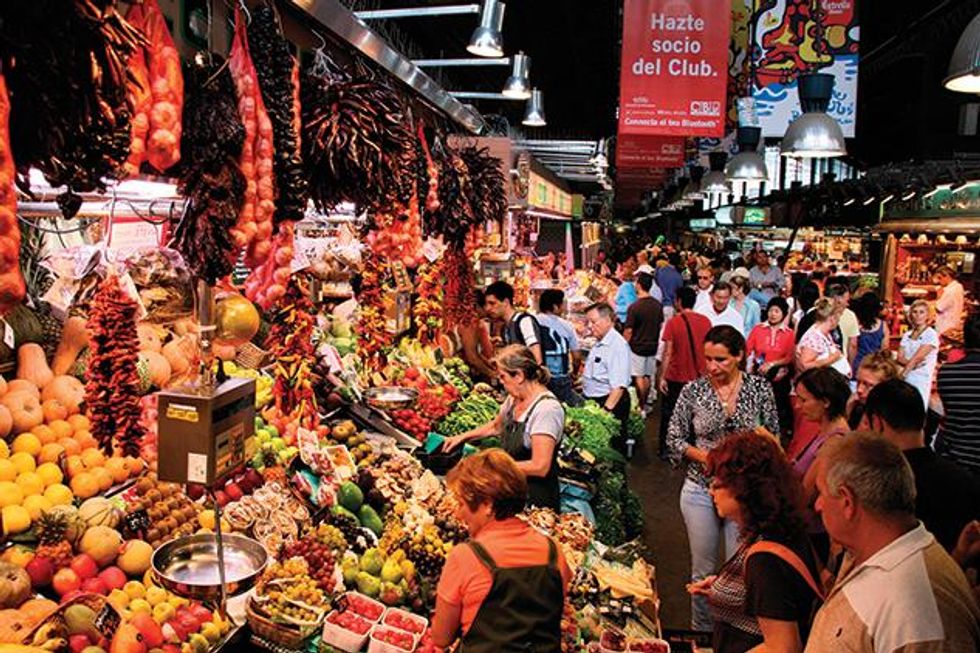 6. La Boqueria
6. La Boqueria 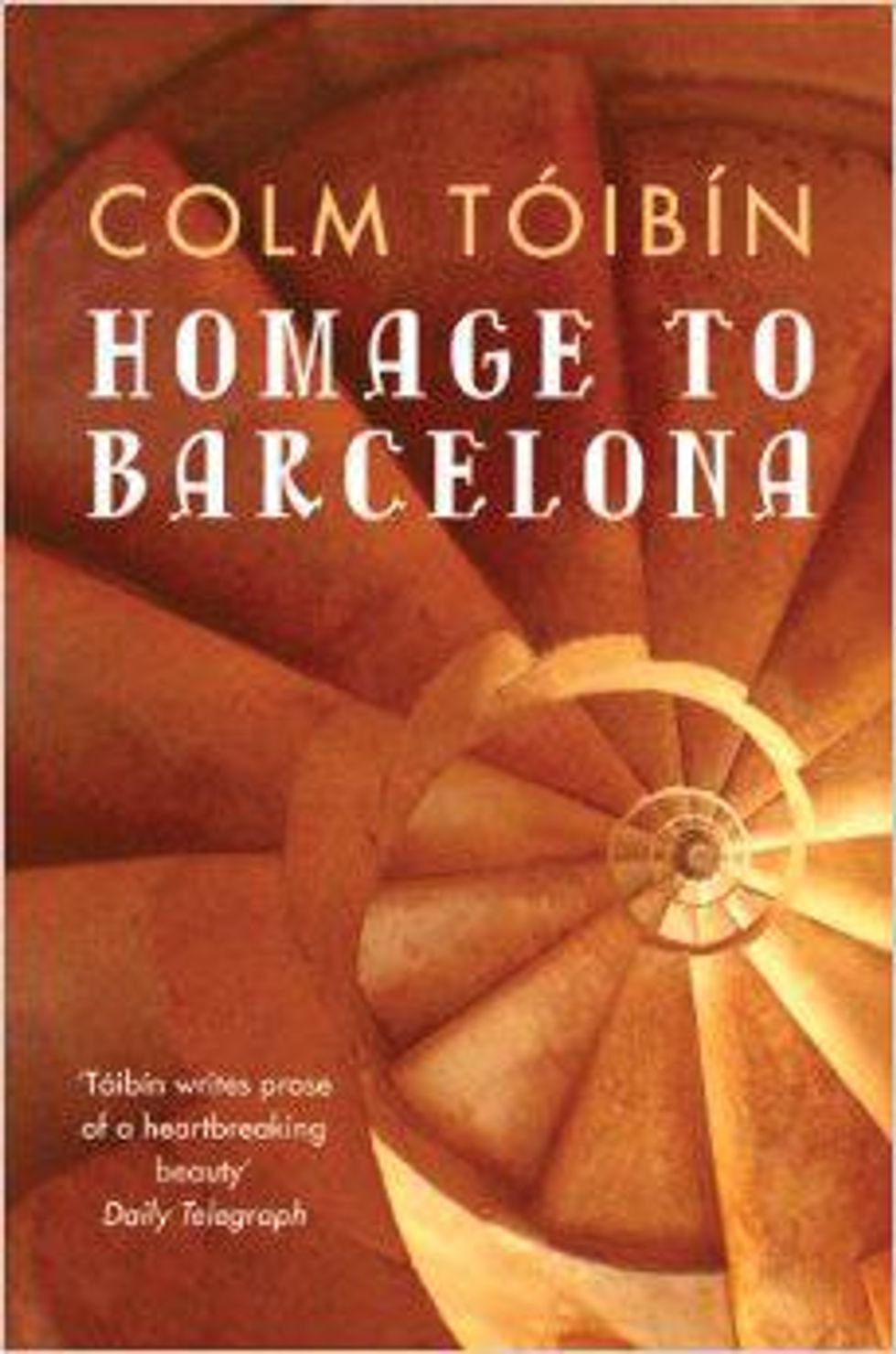 7. Homage to Barcelona, by Colm Toibin
7. Homage to Barcelona, by Colm Toibin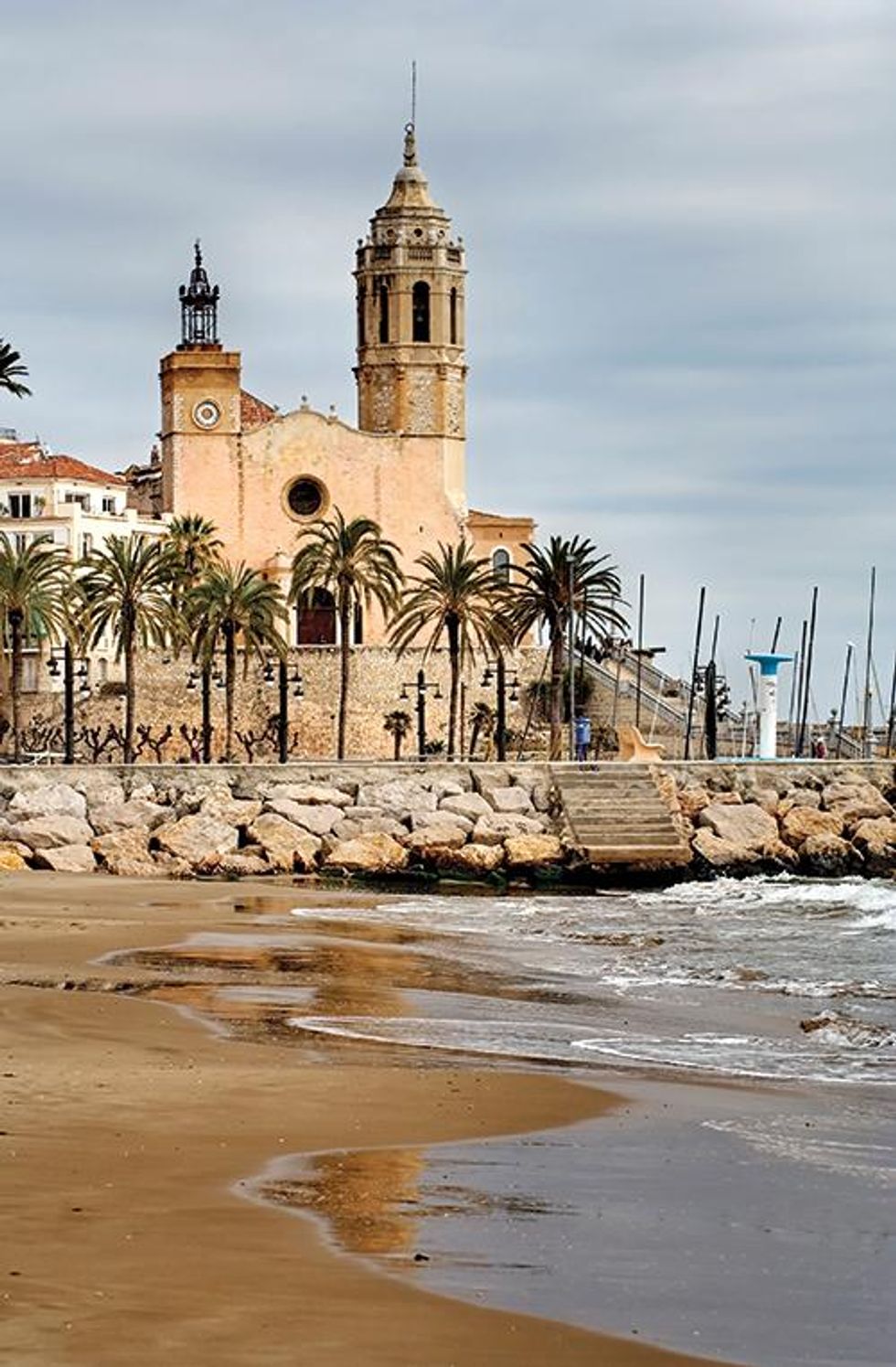 8. Sitges
8. Sitges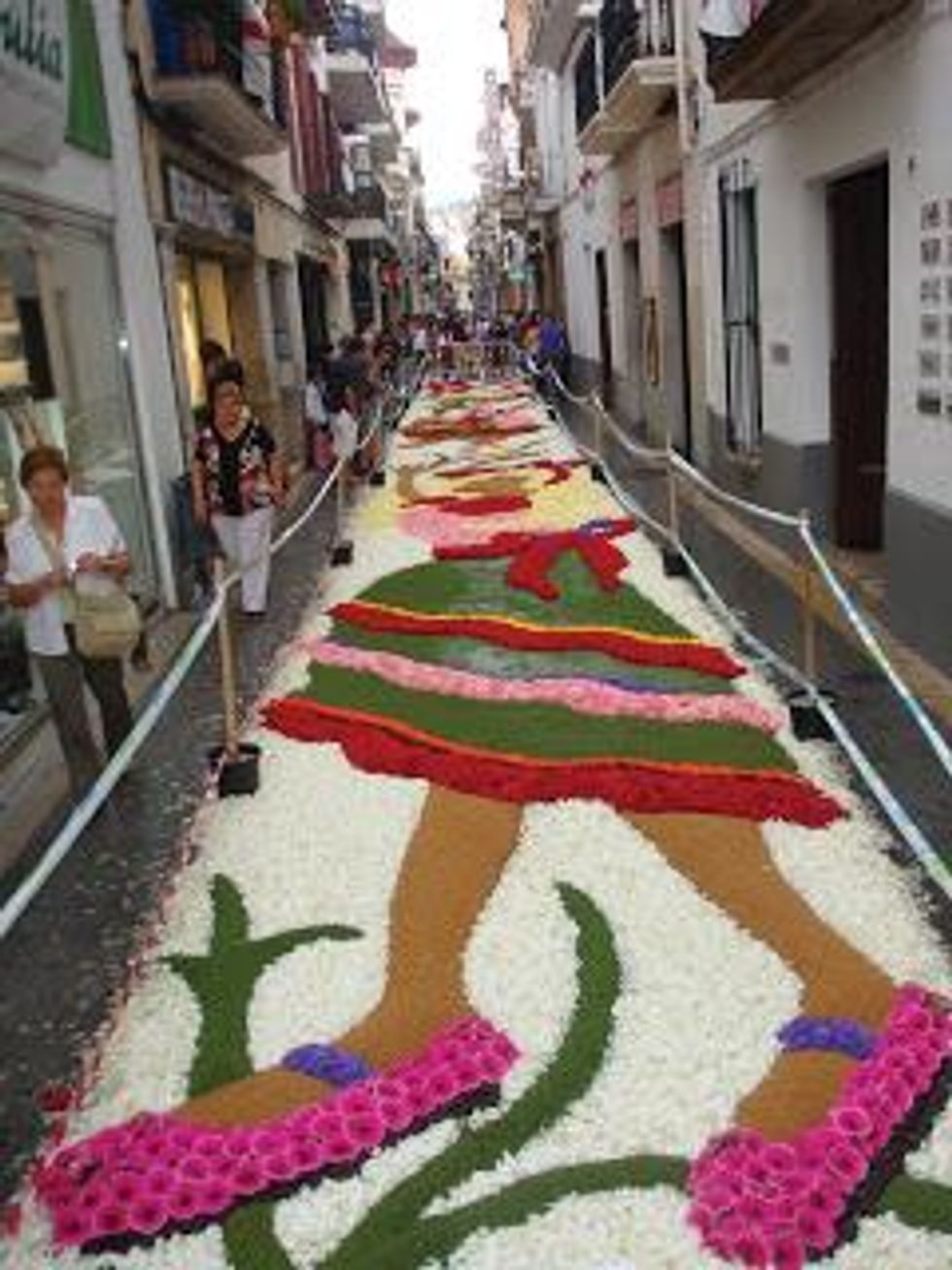
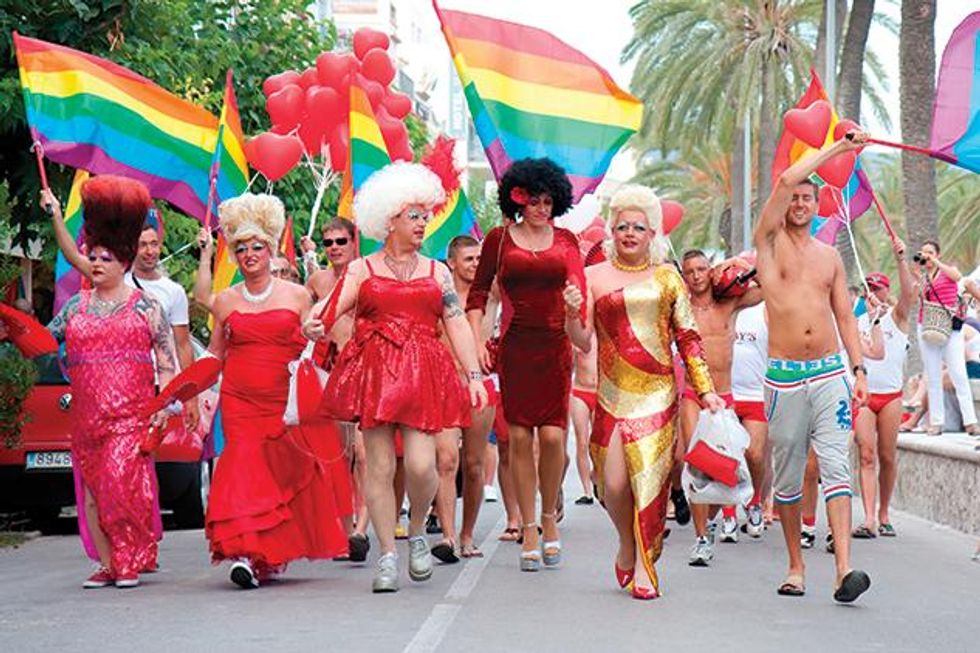 10. Sitges Gay Carnival
10. Sitges Gay Carnival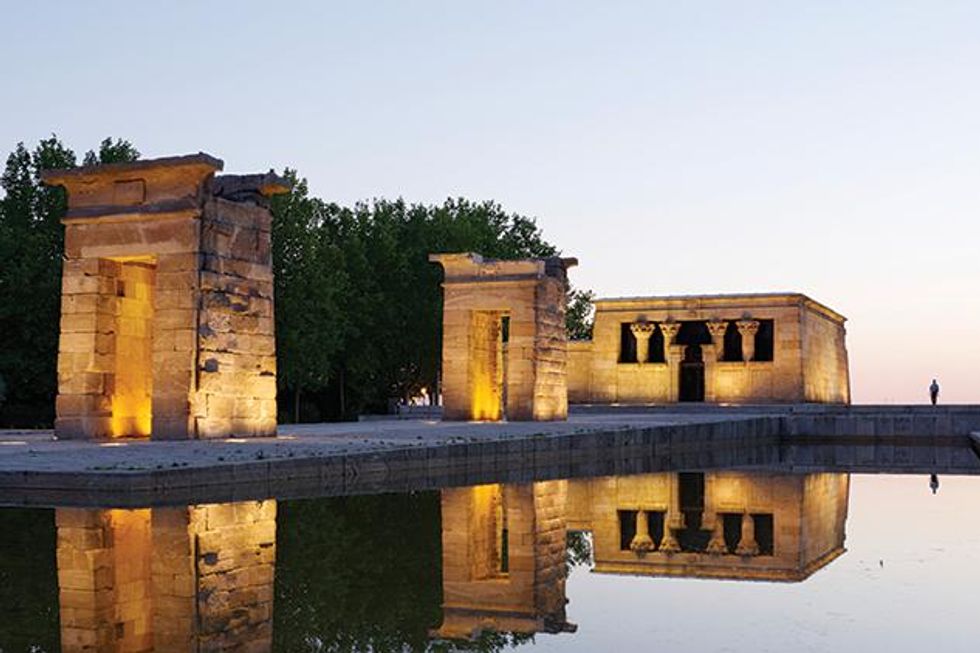 11. Temple of Debod
11. Temple of Debod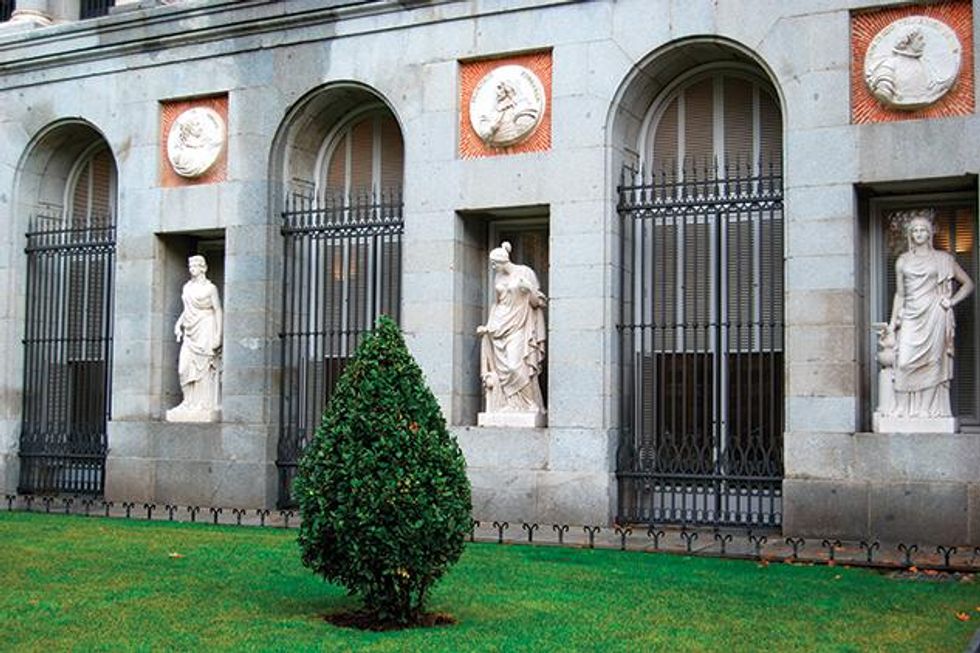 12. The Prado
12. The Prado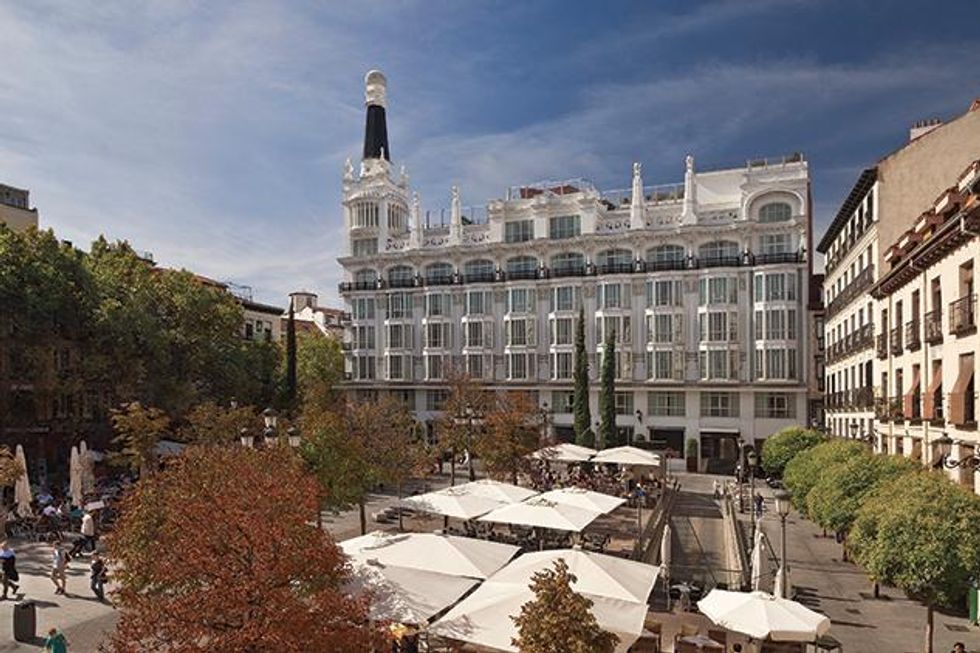 13. ME Madrid Reina Victoria
13. ME Madrid Reina Victoria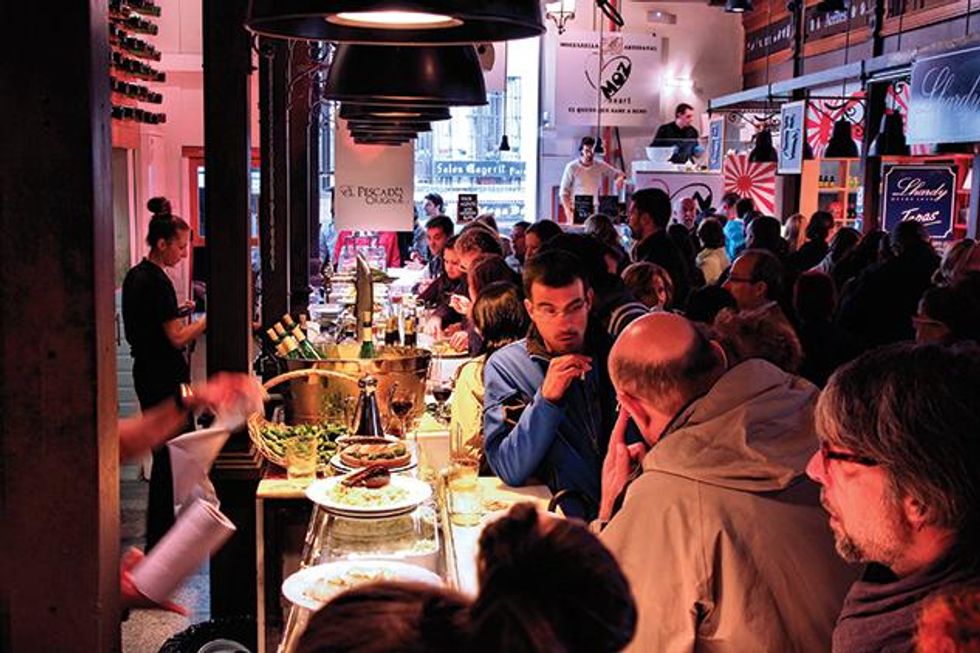 14. Mercado San Miguel
14. Mercado San Miguel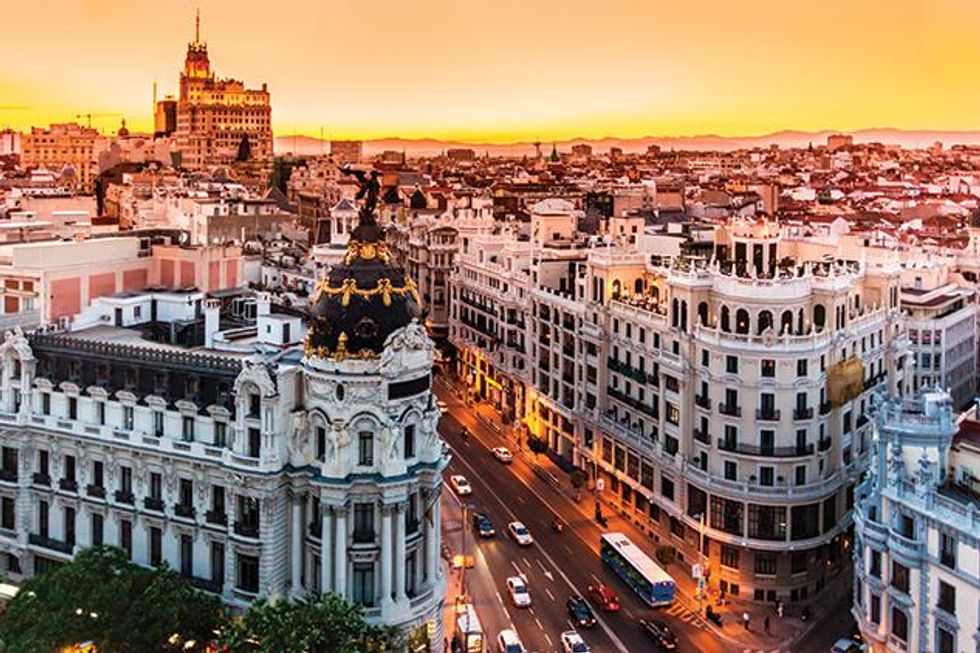 15. Tartan Roof at Azotea del Circulo
15. Tartan Roof at Azotea del Circulo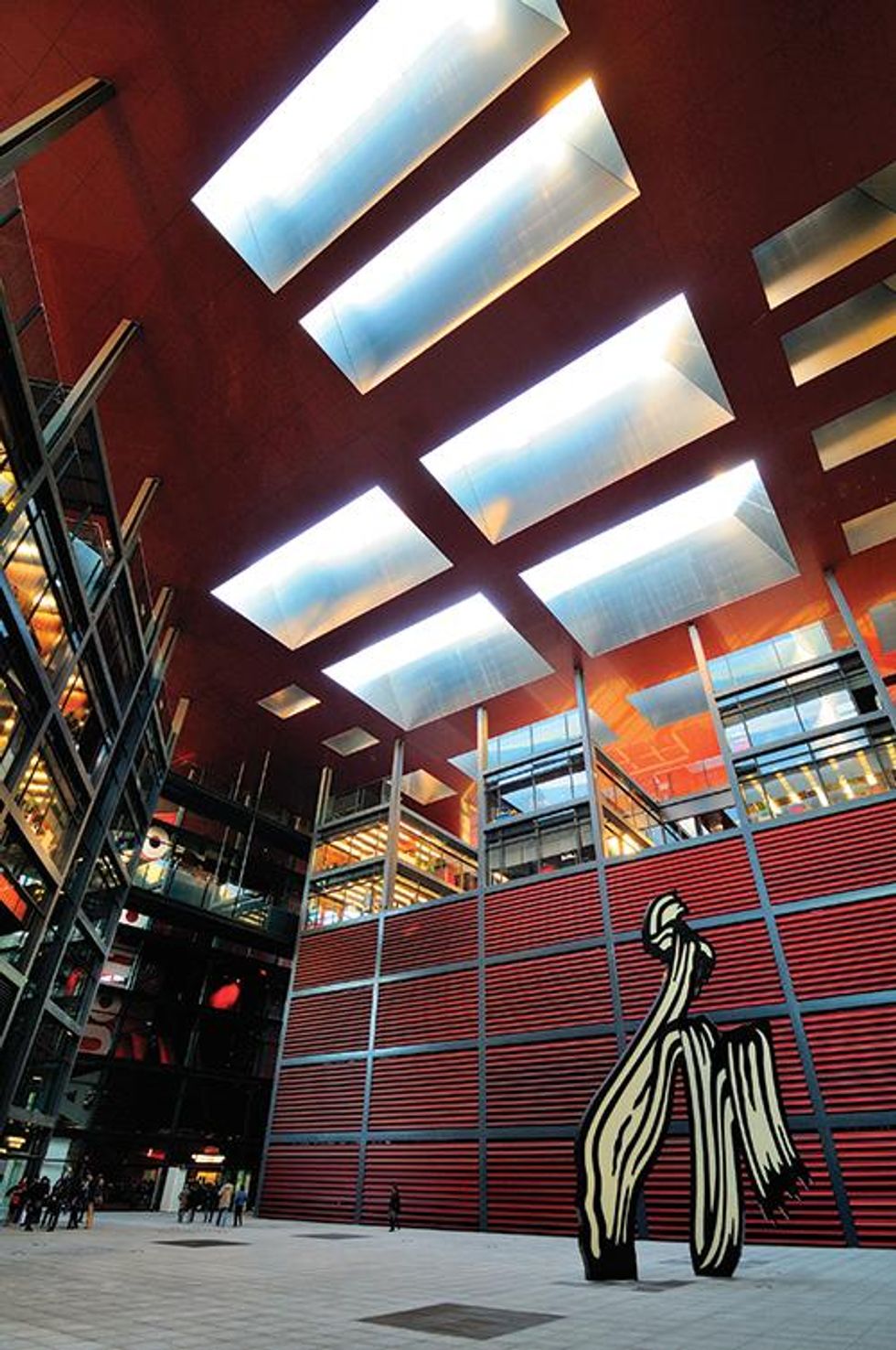 16. The Sofia
16. The Sofia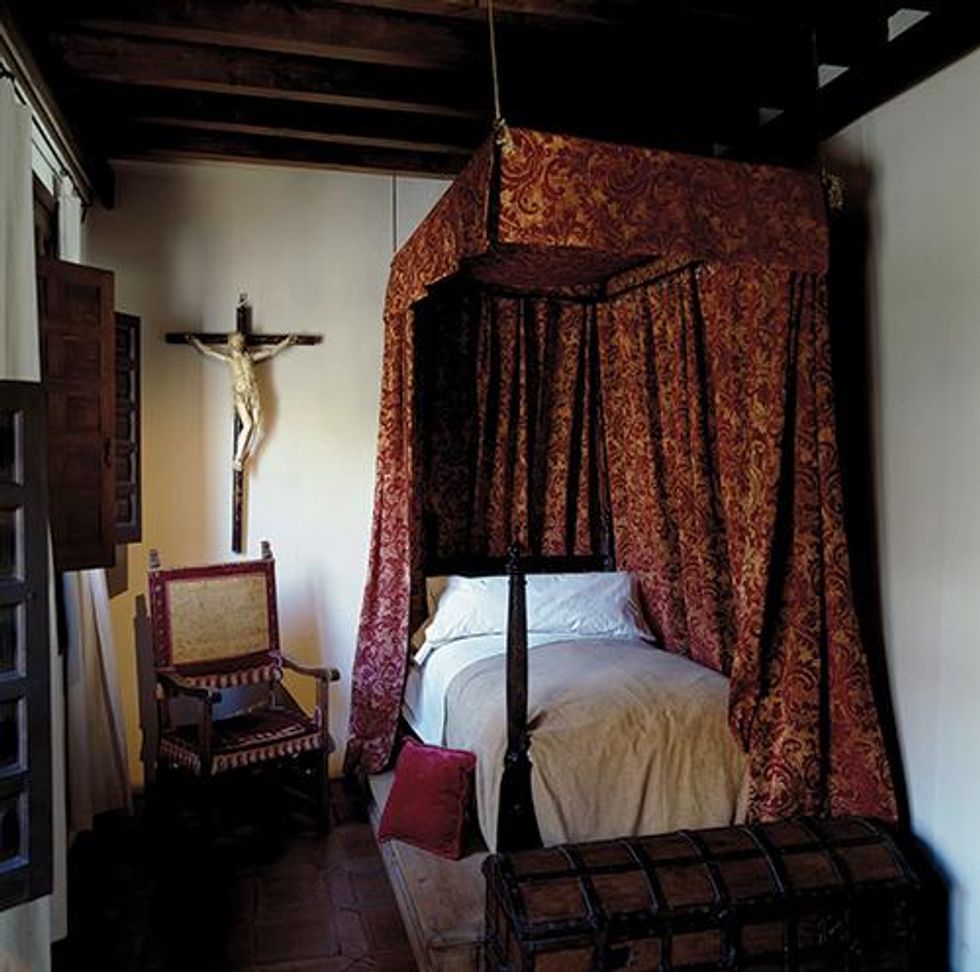 17. Museo Casa Natal de Cervantes
17. Museo Casa Natal de Cervantes
Viral post saying Republicans 'have two daddies now' has MAGA hot and bothered